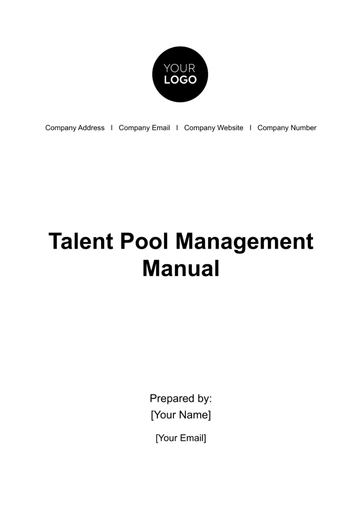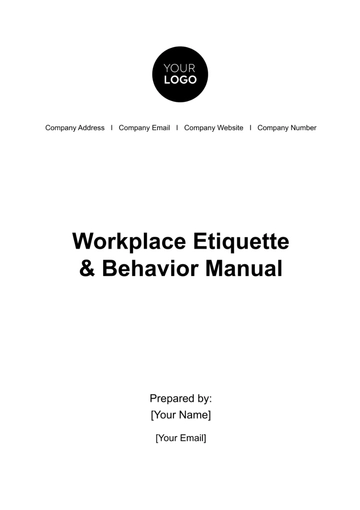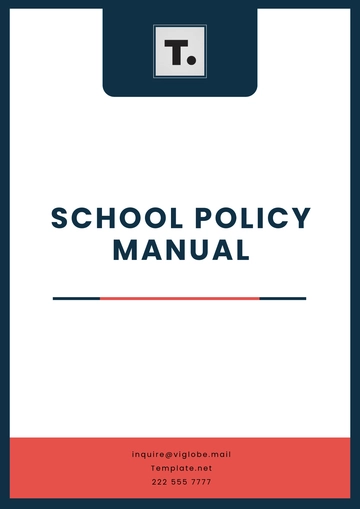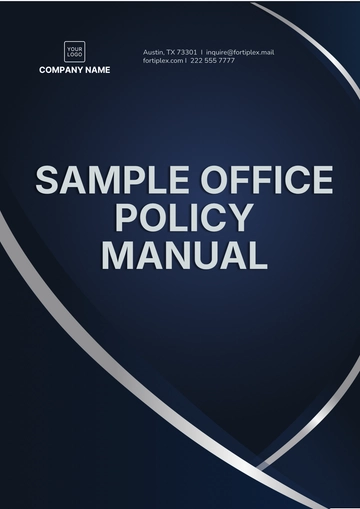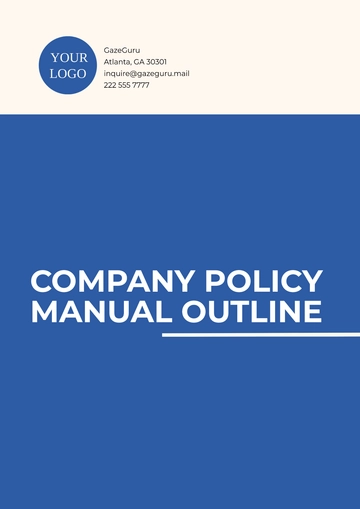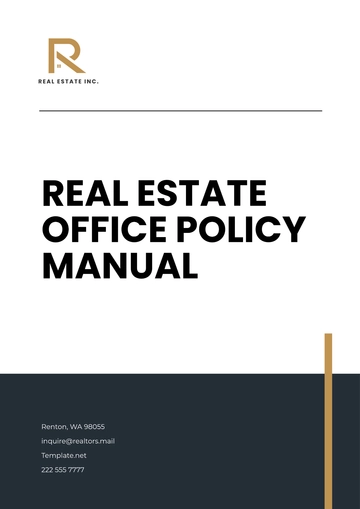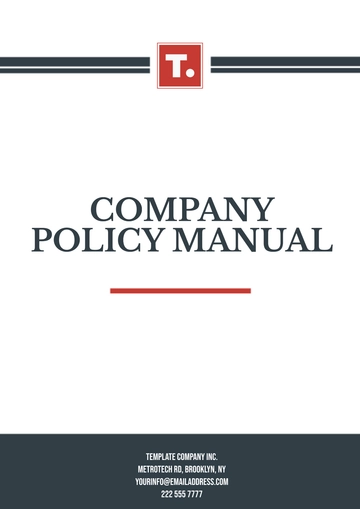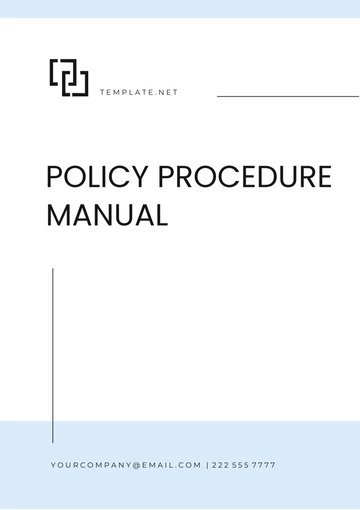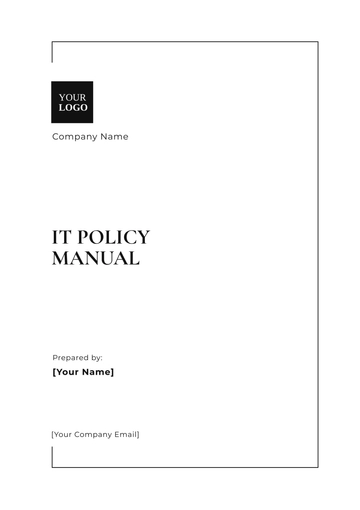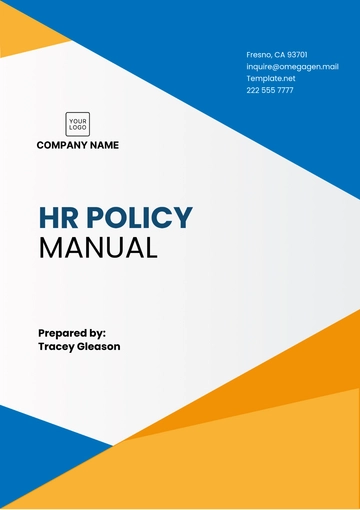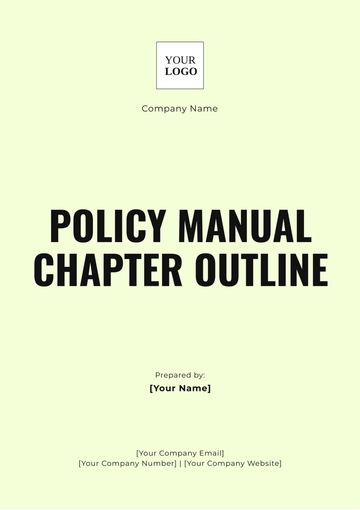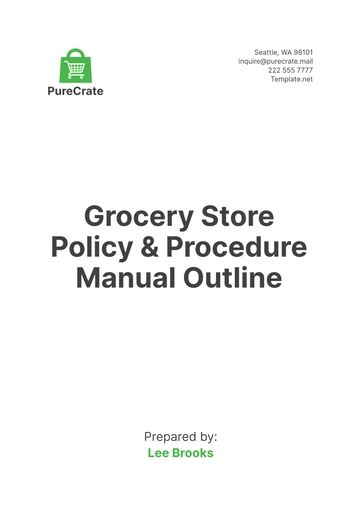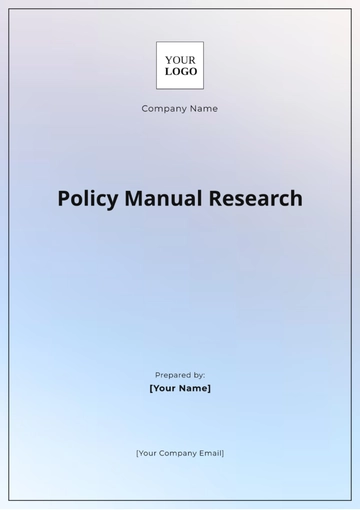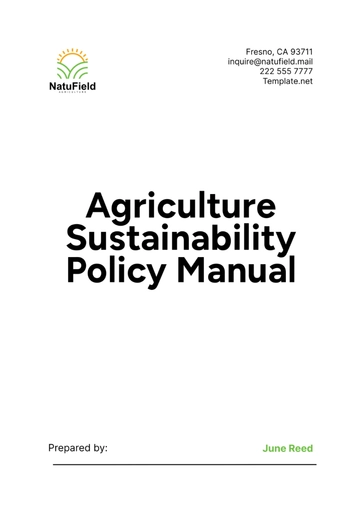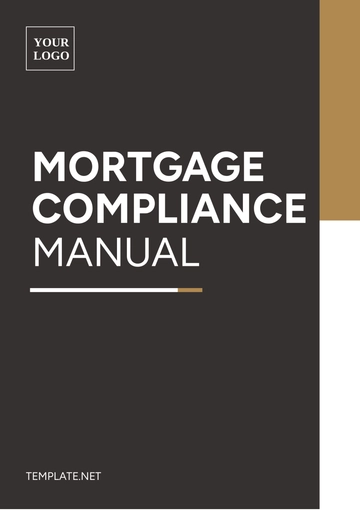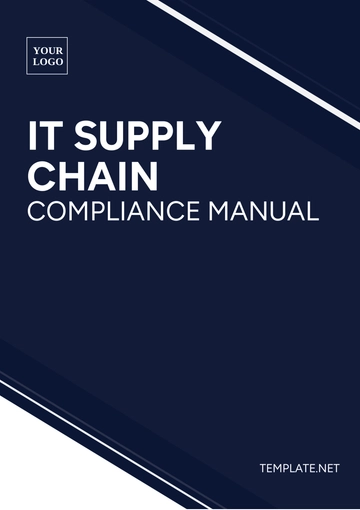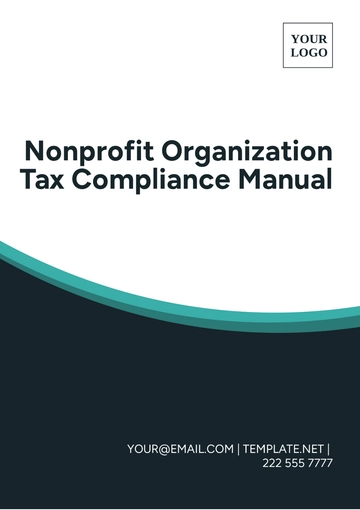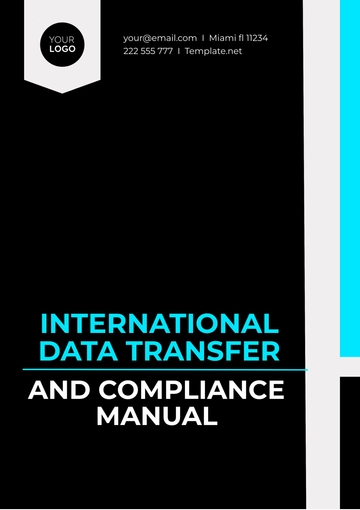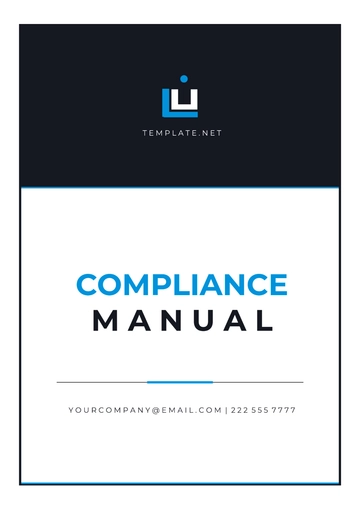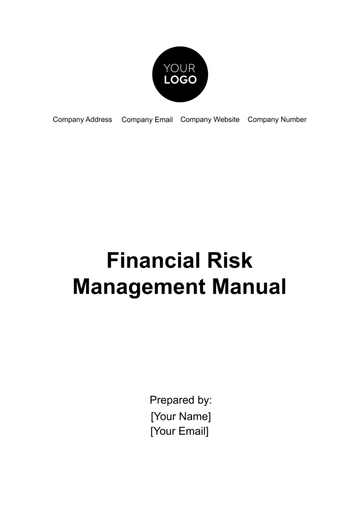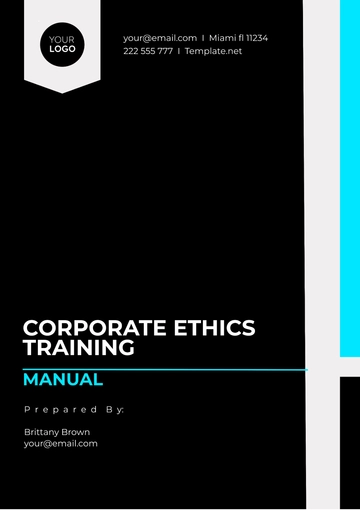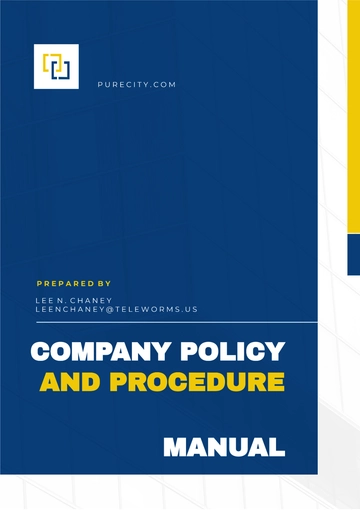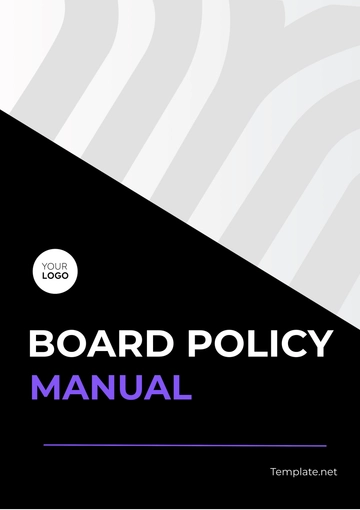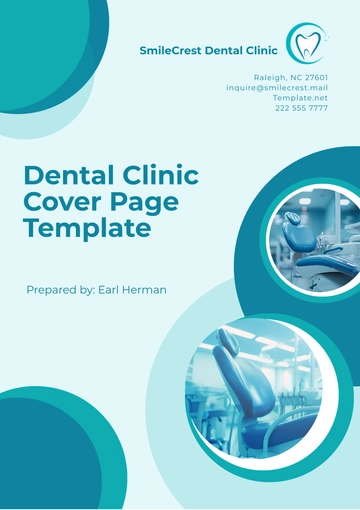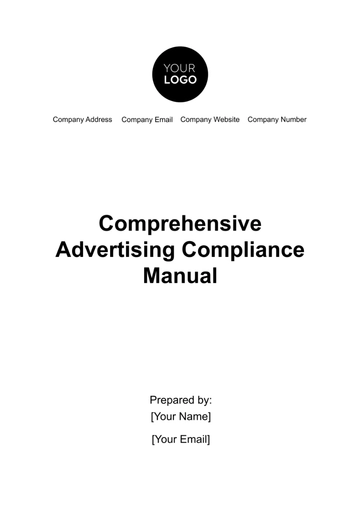Free Administration Comprehensive Compliance Manual
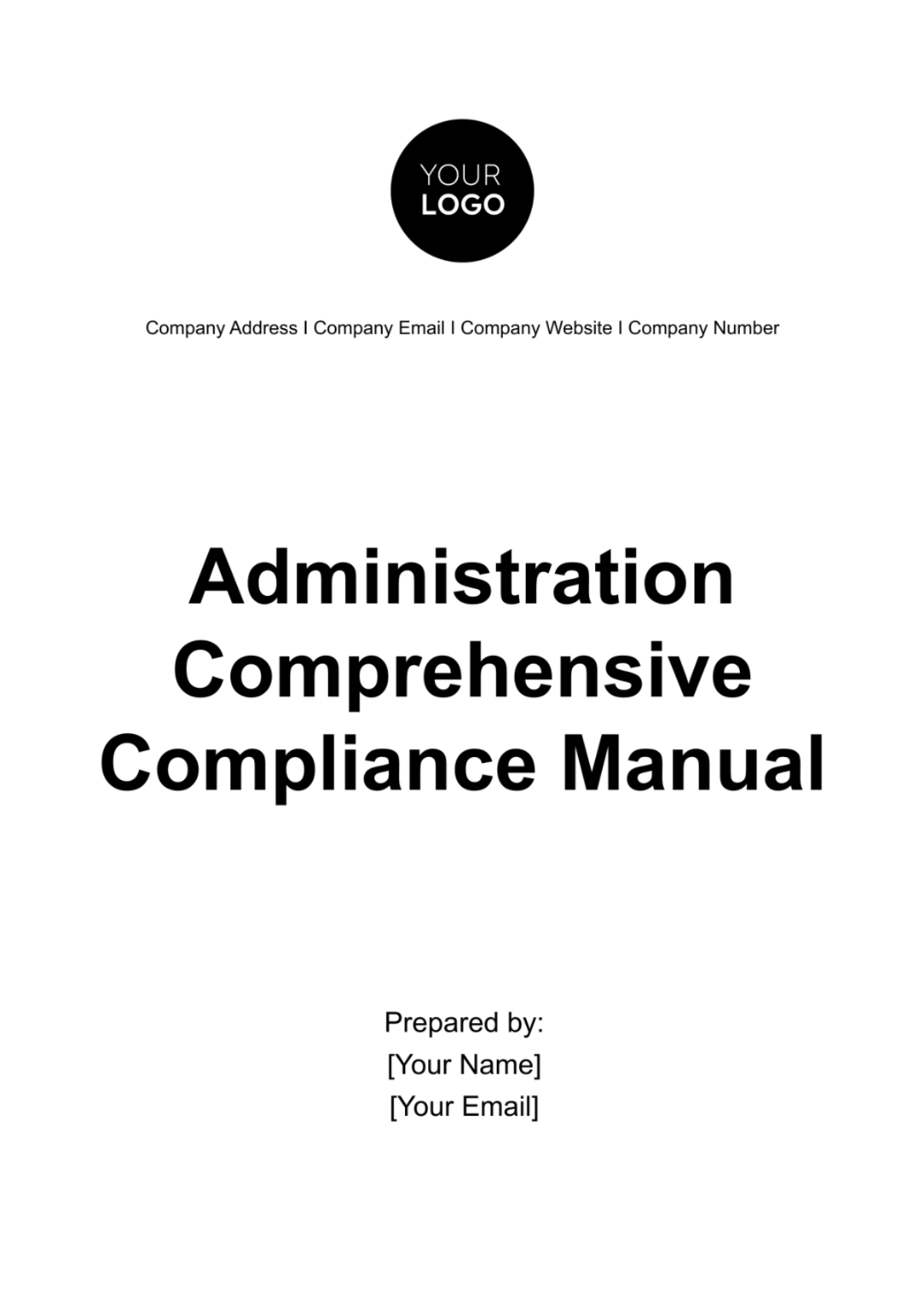
I. Introduction
Welcome to the Administration Comprehensive Compliance Manual of [Your Company Name]. This manual serves as a cornerstone document in our commitment to upholding the highest standards of ethics, integrity, and legal compliance. Compliance with laws, regulations, industry standards, and internal policies is not only a legal obligation but also a fundamental aspect of our corporate culture.
II. Compliance Framework
Legal and Regulatory Environment
[Your Company Name] operates in a complex regulatory landscape governed by federal, state, and local laws, as well as industry-specific regulations. Compliance with these regulations is critical to avoiding legal sanctions, protecting our reputation, and maintaining the trust of our stakeholders. Examples of key regulations include:
The Fair Labor Standards Act (FLSA), which governs minimum wage, overtime pay, and child labor standards.
The Health Insurance Portability and Accountability Act (HIPAA), which safeguards protected health information.
The Sarbanes-Oxley Act (SOX), which establishes requirements for corporate governance and financial reporting.
Organizational Policies and Procedures
[Your Company Name] has developed a robust set of internal policies and procedures to support compliance efforts and promote ethical conduct. These include:
Code of Conduct: Our Code of Conduct outlines the principles and values that guide our behavior and decision-making processes. It covers areas such as honesty, integrity, confidentiality, and respect for diversity.
Data Privacy Policy: This policy governs the collection, use, storage, and sharing of personal and sensitive information. It ensures compliance with data protection laws and industry standards, such as the General Data Protection Regulation (GDPR).
Conflict of Interest Policy: Our Conflict of Interest Policy requires employees to disclose any personal, financial, or professional interests that may conflict with their duties to [Your Company Name]. This transparency helps mitigate potential conflicts and ensures impartial decision-making.
III. Compliance Governance
Compliance Officer Responsibilities
The Compliance Officer is appointed by senior management and is responsible for overseeing [Your Company Name]'s compliance program. Key responsibilities include:
Developing and implementing compliance policies, procedures, and training programs.
Providing guidance and support to employees on compliance-related matters.
Monitoring and auditing compliance activities to identify and address areas of risk.
Reporting regularly to senior management and the board of directors on compliance performance and issues.
Compliance Committee Structure
[Your Company Name] has established a Compliance Committee comprising senior executives and representatives from key functional areas. The Compliance Committee meets regularly to:
Review compliance risks and initiatives.
Assess the effectiveness of compliance controls and processes.
Make recommendations for enhancing the compliance program.
Reporting and Escalation Procedures
[Your Company Name] encourages open communication and reporting of compliance concerns. Employees are encouraged to report suspected violations through various channels, including:
Direct reporting to supervisors or the Compliance Officer.
Submission of reports through the company's anonymous whistleblower hotline.
Utilization of online reporting tools or designated email addresses.
Reports are promptly investigated, and appropriate actions are taken to address any confirmed violations or deficiencies.
IV. Compliance Risk Assessment
Identification of Compliance Risks
[Your Company Name] conducts periodic assessments to identify potential compliance risks and vulnerabilities. This includes:
Reviewing changes in laws, regulations, and industry standards.
Analyzing operational processes and identifying areas of weakness or exposure.
Consulting with internal and external experts to assess emerging risks and trends.
Risk Assessment Methodology
The risk assessment process follows a structured approach, including:
Identification of specific compliance risks and their potential impact on the organization.
Evaluation of the likelihood and severity of each risk based on historical data and expert judgment.
Prioritization of risks to focus resources on addressing the most significant threats to the organization.
Development of risk mitigation strategies and action plans to reduce exposure and strengthen controls.
Risk Mitigation Strategies
[Your Company Name] implements a range of strategies to mitigate compliance risks, including:
Implementing and enforcing robust internal controls and procedures to prevent violations.
Providing targeted training and education programs to raise awareness of compliance obligations and best practices.
Conducting regular monitoring and auditing activities to detect and address issues proactively.
Engaging with industry peers and regulatory authorities to stay abreast of emerging risks and regulatory developments.
V. Training and Education
[Your Company Name] is committed to providing comprehensive training and education programs to empower employees with the knowledge and skills needed to fulfill their compliance obligations effectively. Training topics include:
Code of Conduct and Ethics: Training on ethical decision-making, integrity, and professionalism.
Anti-Corruption and Bribery Policies: Education on laws and regulations related to bribery, corruption, and conflicts of interest.
Data Privacy and Protection: Instruction on data privacy laws, handling of sensitive information, and cybersecurity best practices.
Conflicts of Interest Management: Guidance on identifying, disclosing, and managing conflicts of interest in the workplace.
Training programs are tailored to the specific needs of different employee groups, job roles, and levels of responsibility within the organization. They are delivered through a variety of formats, including in-person workshops, online courses, and informational materials.
VI. Policies and Procedures
Anti-Corruption and Bribery Policies
[Your Company Name] prohibits bribery, corruption, and unethical behavior in all aspects of its business operations. Our Anti-Corruption and Bribery Policies:
Prohibit offering, soliciting, or accepting bribes or kickbacks in any form, including cash, gifts, or other inducements.
Require employees to conduct business with integrity, honesty, and fairness in all interactions with customers, suppliers, and business partners.
Provide guidance on conducting due diligence on third parties and vetting business transactions to mitigate corruption risks.
Mandate reporting of any suspected violations of anti-corruption laws or company policies to the Compliance Officer or designated authorities.
Data Privacy and Protection
[Your Company Name] is committed to protecting the privacy and security of personal and sensitive information entrusted to us by customers, employees, and other stakeholders. Our Data Privacy and Protection Policy:
Defines the types of information collected, processed, and stored by the organization and the purposes for which it is used.
Establishes procedures for obtaining consent from individuals for the collection and use of their personal data.
Sets forth requirements for securing data against unauthorized access, use, or disclosure through encryption, access controls, and other technical safeguards.
Specifies procedures for responding to data breaches, including notification requirements to affected individuals, regulators, and other stakeholders.
Conflicts of Interest Management
[Your Company Name] requires employees to identify and disclose any conflicts of interest that may arise in the course of their employment. Our Conflicts of Interest Management Policy:
Defines conflicts of interest and provides examples of situations where conflicts may arise, such as financial interests, family relationships, or outside employment.
Requires employees to complete annual conflict of interest disclosures and update them as new conflicts arise.
Establishes procedures for reviewing and assessing disclosed conflicts to determine their potential impact on the organization.
Outlines measures for managing conflicts, including recusal from decision-making, implementing safeguards, or divestment of conflicting interests.
VII. Regulatory Compliance
[Your Company Name] is subject to various regulatory requirements governing its operations. Key areas of regulatory compliance include:
Financial Regulations: Compliance with regulations such as the Sarbanes-Oxley Act (SOX), Dodd-Frank Act, and Financial Industry Regulatory Authority (FINRA) rules governing financial reporting, disclosure, and transparency.
Healthcare Regulations: Compliance with laws such as the Health Insurance Portability and Accountability Act (HIPAA), Health Information Technology for Economic and Clinical Health (HITECH) Act, and Medicare regulations governing patient privacy, electronic health records, and billing practices.
Environmental Regulations: Compliance with federal, state, and local laws and regulations related to environmental protection, pollution prevention, and sustainable practices.
Employment Regulations: Compliance with laws such as the Fair Labor Standards Act (FLSA), Title VII of the Civil Rights Act, and the Americans with Disabilities Act (ADA) governing employment practices, discrimination, and harassment prevention.
[Your Company Name] maintains proactive compliance programs and initiatives to ensure adherence to these and other regulatory requirements, including regular audits, training, and ongoing monitoring of regulatory developments.
VIII. Monitoring and Auditing
[Your Company Name] conducts regular monitoring and auditing activities to evaluate the effectiveness of its compliance program and identify areas for improvement. Key components of our monitoring and auditing efforts include:
Compliance Audits: Scheduled and ad-hoc audits of key compliance areas to assess compliance with policies, procedures, and regulatory requirements.
Internal Controls Testing: Evaluation of the design and effectiveness of internal controls to prevent, detect, and remediate compliance deficiencies.
Risk-Based Monitoring: Targeted monitoring of high-risk areas and activities based on the results of risk assessments and compliance incident data.
Data Analytics: Utilization of data analytics tools and techniques to identify trends, anomalies, and potential compliance issues in large datasets.
Results of monitoring and auditing activities are documented, analyzed, and reported to senior management, the board of directors, and relevant oversight committees to drive continuous improvement and accountability.
IX. Reporting and Investigation
[Your Company Name] encourages employees to report any suspected violations of laws, regulations, or company policies through the established reporting channels. Reports can be made anonymously, and retaliation against whistleblowers is strictly prohibited. Reporting channels include:
Direct reporting to supervisors, managers, or the Compliance Officer.
Utilization of the company's anonymous whistleblower hotline or online reporting portal.
Submission of reports through designated email addresses or physical mailboxes.
Reports are promptly reviewed and investigated by the Compliance Officer or designated personnel. Investigations are conducted impartially, thoroughly, and in accordance with established procedures, including:
Gathering and preserving evidence through interviews, document reviews, and data analysis.
Assessing the credibility of reported allegations and corroborating evidence.
Consulting with legal counsel and other subject matter experts as needed.
Documenting findings, conclusions, and remedial actions taken in response to confirmed violations.
[Your Company Name] maintains strict confidentiality throughout the investigation process and respects the rights of all parties involved.
Whistleblower Policies
[Your Company Name] has established whistleblower policies to protect employees who report suspected violations of laws, regulations, or company policies in good faith. These policies:
Prohibit retaliation against whistleblowers for making reports or cooperating with investigations.
Provide mechanisms for anonymous reporting to protect the identity of whistleblowers.
Ensure confidentiality of whistleblower reports and information disclosed during investigations.
Guarantee non-retaliation and confidentiality agreements for whistleblowers as permitted by law.
[Your Company Name] is committed to fostering a culture of transparency, accountability, and ethical behavior by encouraging employees to speak up about compliance concerns without fear of reprisal.
Investigation Procedures
Investigations of reported violations are conducted promptly, impartially, and in accordance with established procedures. Key steps in the investigation process include:
Receiving and documenting whistleblower reports through designated channels.
Initiating a preliminary assessment to determine the credibility and seriousness of reported allegations.
Assigning a qualified investigator or investigation team to conduct a thorough inquiry into the reported misconduct.
Collecting and preserving evidence, including witness statements, documents, electronic data, and other relevant information.
Analyzing evidence and conducting interviews with relevant parties to corroborate facts and assess credibility.
Documenting findings, conclusions, and recommendations in an investigation report for review by management and stakeholders.
Implementing appropriate corrective actions, disciplinary measures, and preventive controls to address confirmed violations and mitigate future risks.
[Your Company Name] maintains strict confidentiality throughout the investigation process to protect the privacy and rights of all parties involved, including whistleblowers, witnesses, and subjects of investigations.
X. Enforcement and Disciplinary Actions
[Your Company Name] enforces compliance with its policies and procedures through a range of enforcement and disciplinary actions. These actions are designed to promote accountability, deter misconduct, and maintain the integrity of our compliance program. Disciplinary measures may include:
Verbal or written warnings: Issued to employees for minor infractions or first-time violations of company policies.
Suspension: Temporary removal of an employee from work duties pending investigation or resolution of compliance issues.
Demotion: Reduction in job responsibilities, authority, or pay grade as a consequence of serious or repeated violations.
Termination of employment: Separation of an employee from the company due to egregious misconduct, repeated violations, or failure to remediate compliance deficiencies.
Disciplinary actions are administered fairly, consistently, and in accordance with established policies and procedures. Employees subject to disciplinary actions have the right to appeal decisions through designated grievance and dispute resolution mechanisms.
XI. Recordkeeping and Documentation
[Your Company Name] maintains accurate and comprehensive records documenting its compliance activities, including:
Records of training and education programs attended by employees, including course materials, attendance logs, and completion certificates.
Documentation of compliance monitoring and auditing activities, including audit plans, work papers, findings reports, and management responses.
Reports of investigations and disciplinary actions taken in response to confirmed violations of laws, regulations, or company policies.
Records are retained in accordance with applicable laws, regulations, and industry standards and are stored securely to prevent loss, theft, or unauthorized access. Access to records is restricted to authorized personnel with a legitimate business need for the information.
XII. Continuous Improvement
[Your Company Name] is committed to the continuous improvement of its compliance program to adapt to changing regulatory requirements, emerging risks, and evolving best practices. Key elements of our continuous improvement efforts include:
Regular evaluation of the effectiveness of compliance policies, procedures, and controls through self-assessments, benchmarking studies, and external audits.
Solicitation of feedback from employees, stakeholders, and external experts through surveys, focus groups, and advisory panels.
Analysis of compliance incident data, audit findings, and enforcement actions to identify trends, patterns, and systemic issues.
Implementation of corrective actions, enhancements, and innovations to address identified deficiencies and strengthen compliance controls.
Collaboration with industry peers, professional associations, and regulatory authorities to share insights, lessons learned, and best practices for compliance management.
[Your Company Name] embraces a culture of continuous improvement and innovation, where all employees are encouraged to contribute ideas, suggestions, and feedback to enhance our compliance program and promote ethical conduct throughout the organization.
XIII. Appendices
Glossary of Terms: Definitions of key terms and concepts used throughout the Compliance Manual.
References and Resources: List of relevant laws, regulations, industry standards, and guidance documents referenced in the Compliance Manual.
Forms and Templates: Sample forms, checklists, and templates for compliance-related activities, such as training records, incident reports, and investigation logs.
XIV. Acknowledgments
[Your Company Name] acknowledges the contributions of all employees, stakeholders, and external partners involved in the development, implementation, and maintenance of the Compliance Manual. Their dedication, expertise, and collaboration are instrumental in promoting a culture of compliance and integrity within our organization.
- 100% Customizable, free editor
- Access 1 Million+ Templates, photo’s & graphics
- Download or share as a template
- Click and replace photos, graphics, text, backgrounds
- Resize, crop, AI write & more
- Access advanced editor
Discover the ultimate compliance solution with Template.net's Administration Comprehensive Compliance Manual Template. Expertly crafted and fully editable, this customizable template empowers you to streamline your compliance efforts effortlessly. Utilize the innovative AI Editor Tool to tailor policies and procedures to your organization's unique needs. Ensure compliance with confidence and ease.
